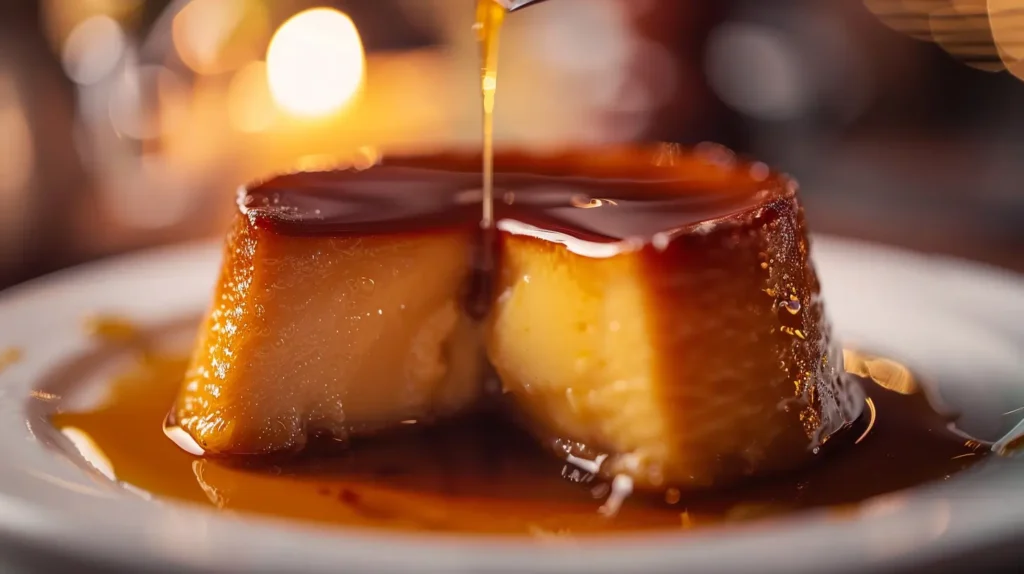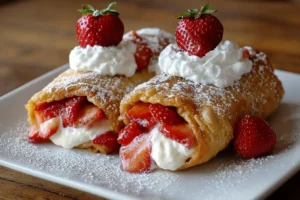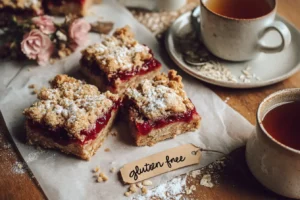In the quiet hum of a Havana afternoon, an aroma swirls through the streets—a blend of vanilla, slow-cooked caramel, and something faintly citrus. It comes from Marta’s kitchen, where she’s been perfecting her flan recipe for over fifty years. Her granddaughter, Lucia, hovers at the doorway, eyes wide, waiting for the first spoonful. It’s not just dessert—it’s a ritual rooted in love and legacy.
Down the street, cousins laugh as they pass around pastelitos filled with guava and cheese, their hands sticky, their mouths full of joy. The neighborhood is alive with the smell of cinnamon, toasted coconut, and browned sugar. These are not just ordinary treats—they are Cuban desserts at their finest: rich in flavor, steeped in tradition, and made with whatever the pantry offers.
Every Cuban dessert tells a story. Some are made for celebrations, others for comforting quiet moments at home. But all are born from the same spirit—a deep sense of family, culture, and resilience. Whether it’s a chilled slice of tres leches at a birthday party or a warm bowl of arroz con leche shared after dinner, these sweets are more than food. They are edible memories that stretch across generations.
For Cubans at home or abroad, dessert isn’t the end of a meal. It marks the start of a story, a shared memory, and a moment of joy. And in Cuba, dessert is never optional—it’s tradition.
Table of Contents
Introduction
Cuban desserts are more than just sweet treats—they’re edible reflections of the island’s vibrant culture, colonial history, and creative resilience. Passed down through generations and enriched by Spanish, African, and Caribbean heritage, Cuban desserts embody the island’s cultural essence in every mouthful.
Sugar lies at the heart of Cuban desserts, which comes as no surprise considering Cuba’s historic role as a global leader in sugar production. Introduced by Spanish colonists and cultivated intensively across the island, sugar became a foundation of Cuba’s economy and cuisine. As enslaved Africans brought their culinary knowledge and local traditions took shape, Cuban desserts evolved into something uniquely hybrid: comforting, flavorful, and rich with history.
From the silky custards of flan to the soaked sweetness of tres leches cake and the crisp, fruity pastelitos filled with guava and cream cheese, Cuban desserts rely on accessible, pantry-ready ingredients like condensed milk, eggs, cinnamon, and tropical fruits. Despite economic challenges and food shortages in Cuba’s modern history, Cuban desserts recipes have survived—often passed down orally, shared in handwritten notes, or adapted with creative substitutions.
Whether enjoyed with a cafecito in Havana or lovingly recreated in the kitchens of Cuban-American homes in Miami, Cuban desserts remain deeply personal and cultural. They represent hospitality, nostalgia, and connection. Many are served during special celebrations or religious holidays, while others—like arroz con leche—are everyday comforts.
This article is your invitation to taste that legacy. From the classic sweets served during Cuban holidays to the creamy confections found in every abuela’s kitchen, we’ll journey through the island’s most beloved desserts—one delicious memory at a time.
Print
Guava Pastry
- Total Time: 30 minutes
- Yield: 12 pastries 1x
- Diet: Vegetarian
Description
Guava Pastry, also known as Pastelitos de Guayaba, is a classic Cuban treat featuring flaky, buttery puff pastry filled with sweet, tangy guava paste. Often enjoyed as a breakfast pastry or dessert, it delivers the perfect balance of crispy layers and fruity richness. These little parcels are usually baked until golden brown and sometimes topped with a sprinkle of sugar or paired with cream cheese for an extra creamy twist.
Ingredients
-
1 package frozen puff pastry sheets (thawed)
-
8 oz guava paste (cut into small cubes)
-
1 egg (beaten, for egg wash)
-
Powdered sugar (optional, for dusting)
-
Cream cheese (optional, for serving)
Instructions
-
Preheat the oven to 400°F (200°C). Line a baking sheet with parchment paper.
-
On a lightly floured surface, unfold the puff pastry sheets and cut each sheet into 3-inch squares.
-
Place a small cube of guava paste in the center of each square.
-
Fold the pastry over to form a triangle or rectangle, enclosing the guava, and press the edges firmly with a fork to seal.
-
Brush the tops with beaten egg to get a beautiful golden finish.
-
Arrange pastries on the baking sheet and bake for 15-20 minutes or until puffed and golden brown.
-
Remove from oven and let cool slightly before dusting with powdered sugar if desired.
-
Serve warm or at room temperature, optionally with a side of cream cheese for dipping.
Notes
-
Make sure the guava paste is firm and cut into small cubes to avoid leaking during baking.
-
Puff pastry can be tricky to handle when warm, so keep it chilled until ready to use.
-
For extra flavor, you can add a thin layer of cream cheese inside before adding the guava.
-
These pastries are best enjoyed fresh but can be stored in an airtight container for up to 2 days.
- Prep Time: 10 minutes
- Cook Time: 15-20 minutes
- Category: Dessert
- Method: Baking
- Cuisine: Cuban
Nutrition
- Serving Size: 1 pastry
- Calories: 180 kcal
- Sugar: 10 g
- Sodium: 90 mg
- Fat: 9 g
- Saturated Fat: 4 g
- Unsaturated Fat: 3 g
- Trans Fat: 0 g
- Carbohydrates: 23 g
- Fiber: 1 g
- Protein: 2 g
- Cholesterol: 25 mg
Tres Leches Cake: A Milky Marvel
Overview:
Tres Leches, meaning “three milks,” is one of the most beloved Cuban desserts and a showstopper at any celebration. This ultra-moist sponge cake is soaked in a mixture of evaporated milk, condensed milk, and heavy cream, giving it an irresistibly rich, custardy texture.
What Makes It Special:
Unlike most cakes, Tres Leches doesn’t rely on frosting for flavor. Its magic is in the milk soak, which saturates the cake without making it soggy. The result is a dense, creamy crumb that practically melts in your mouth. Topped with whipped cream and a sprinkle of cinnamon or fresh fruit, it’s both indulgent and refreshing.
Cultural Significance:
Though popular throughout Latin America, Tres Leches holds a special place in Cuban celebrations—from birthdays and baptisms to Nochebuena feasts. Some Cuban families add rum or coconut milk for an island-inspired twist.
Tip:
Let it rest overnight in the fridge to absorb all the flavors before serving.
Pastelitos de Guayaba: The Flaky Delight
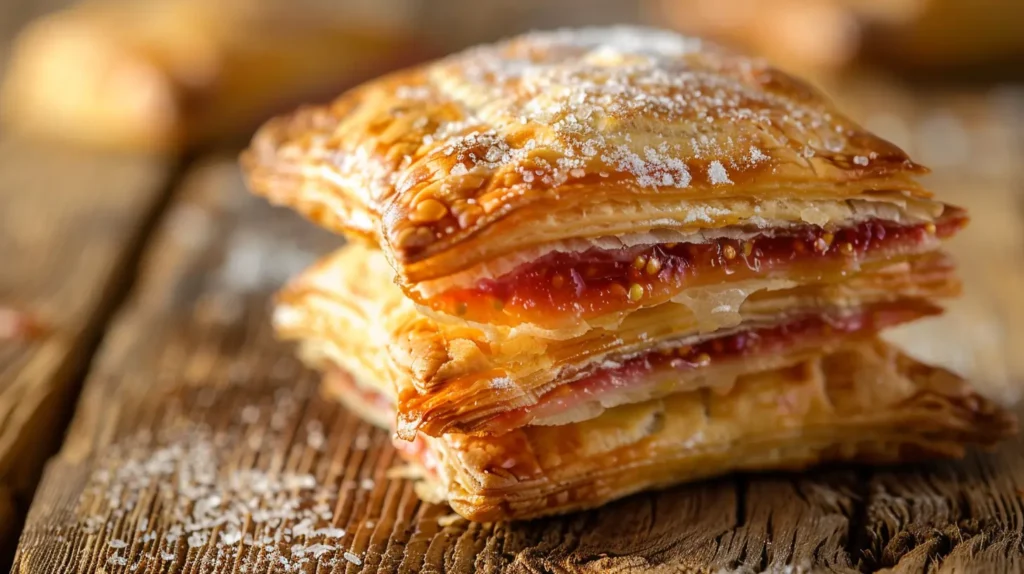
Overview:
Pastelitos de Guayaba are one of the most iconic Cuban desserts—flaky, golden pastries filled with sweet guava paste and often paired with tangy cream cheese. They’re a favorite at bakeries, breakfast tables, and birthday spreads.
What Makes It Special:
The contrast between the buttery, crisp puff pastry and the sticky, tropical guava filling creates a satisfying texture and taste that’s uniquely Cuban desserts. The addition of cream cheese adds a creamy, slightly salty balance that elevates the flavor profile.
Cultural Significance:
In Cuban homes, pastelitos are more than a treat—they’re a tradition. They’re served during holidays, shared over coffee with friends, or wrapped lovingly in foil for a school lunch. This dessert is also popular among the Cuban diaspora, especially in Miami, where every panadería seems to have its own version-Cuban desserts.
Tip:
For a beautifully golden shine, lightly coat the tops with egg wash and a dash of sugar before placing them in the oven.
Arroz con Leche: The Comforting Classic
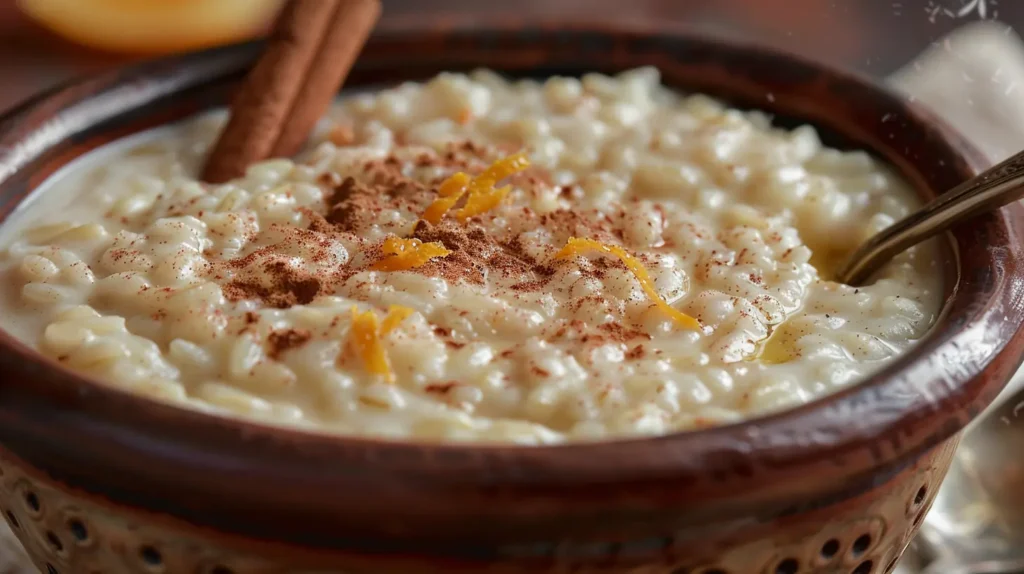
Overview:
Arroz con Leche, Cuba’s beloved rice pudding, offers the kind of comfort that feels like home in every spoonful. Made with rice simmered in milk, sugar, cinnamon, and lemon or lime zest, it’s a dessert that speaks directly to the soul.
What Makes It Special:
What sets the Cuban desserts version apart is its creamy texture and citrus undertone. The citrus zest brings a touch of freshness that offsets the creamy depth of the milk. A final touch of cinnamon or a drizzle of sweetened condensed milk adds an extra layer of indulgence.
Cultural Significance:
In many Cuban homes, Arroz con Leche is a cherished classic and often the first Cuban desserts children prepare alongside their grandmothers. Whether enjoyed warm on a cool night or chilled on a sunny day, it’s a flexible comfort food that suits any season.
Tip:
Use whole milk and short-grain rice for the creamiest consistency.
Dulce de Leche: The Sweet Seduction
Overview:
Dulce de Leche, which means “sweet milk,” is a luscious caramel-like sauce made by slowly heating sweetened milk until it transforms into a thick, golden-brown treat. In Cuba, it’s both a Cuban dessert in itself and a star ingredient in many others.
What Makes It Special:
Unlike typical caramel made with just sugar and water, Dulce de Leche has a rich, creamy base with hints of vanilla and toasted sugar. The slow cooking process deepens its flavor and gives it a velvety texture. It’s spooned over flan, used as cake filling, or simply spread on toast for a sweet pick-me-up.
Cultural Significance:
Dulce de Leche has long been a Cuban desserts kitchen staple. Its simplicity and adaptability have made it a go-to for generations of home bakers and sweet tooths alike.
Tip:
Try making it at home by simmering a can of condensed milk—just be patient, it’s worth it!
Guava Pastry: The Tropical Treat
Overview:
Guava pastries, often confused with pastelitos but slightly more rustic, showcase the vibrant, tangy sweetness of guava paste wrapped in golden, flaky pastry dough. They’re a staple in Cuban desserts, kitchens and bakeries alike.
What Makes It Special:
The star is the guava paste—rich, fruity, and naturally sweet. Combined with buttery pastry, the result is a dessert that’s both satisfying and refreshingly bright. Some versions include a hint of cream cheese, but the purist’s version keeps it simple and tropical.
Cultural Significance:
Guava is one of Cuba’s most iconic fruits, and its presence in desserts like this symbolizes abundance, island pride, and a connection to the land. Guava pastries are typically served with strong Cuban coffee, especially for breakfast or mid-afternoon snack.
Tip:
Chilling the puff pastry and using firm guava paste helps create neat, mess-free portions that hold their shape during baking.
Coconut Flan: A Tropical Twist
Overview:
Coconut Flan takes the beloved Cuban flan to the next level with a touch of tropical flair. By adding shredded coconut or coconut milk to the custard base, this Cuban desserts becomes even richer, creamier, and more aromatic.
What Makes It Special:
The coconut infuses the flan with a subtle nuttiness and texture, beautifully complementing the smooth caramel top. Some versions incorporate toasted coconut for extra flavor and crunch, creating layers of contrast in every bite.
Cultural Significance:
Coconut is abundant in Caribbean cuisine, and this variation is especially popular in coastal Cuban towns. It’s often made for festive occasions, where its unique twist adds a little island magic to the dessert table – Cuban desserts.
Tip:
For extra depth, toast shredded coconut and sprinkle it on top just before serving—it adds both texture and an irresistible aroma.
Mango and Papaya Salad with Rum Syrup
Overview:
This refreshing Cuban dessert pairs ripe tropical fruits—typically mango and papaya—with a sweet, spiced rum syrup. It’s a lighter option among Cuban desserts but no less flavorful, offering a cool, juicy bite with a touch of indulgence.
What Makes It Special:
The fruits are fresh and naturally sweet, but the magic lies in the rum syrup. Made with dark Cuban rum, sugar, lime zest, and sometimes a hint of cinnamon or clove, it adds warmth and complexity to the bright, juicy fruit.
Cultural Significance:
In a country rich with tropical produce, fruit salads like this are a celebration of Cuba’s natural abundance. This Cuban desserts often appears in summer meals, fiestas, or as a refreshing palate cleanser after heavier dishes.
Tip:
Chill the salad before serving and drizzle the syrup just before mealtime to preserve the fruit’s texture and freshness.
Cuban Chocolate Cake: A Rich Indulgence
Overview:
Dense, moist, and deeply chocolaty, Cuban chocolate cake is a dessert made for true chocolate lovers. With notes of espresso or a splash of rum, this cake offers deep richness paired with a subtle, bittersweet kick.
What Makes It Special:
What sets this cake apart is its intense chocolate flavor—sometimes achieved by using both cocoa powder and melted dark chocolate. It’s often topped with a silky chocolate ganache or mocha frosting, giving it an indulgent finish that melts in your mouth.
Cultural Significance:
While not as traditional as flan or arroz con leche, this Cuban desserts has gained popularity in modern Cuban celebrations. It’s a go-to for birthdays, anniversaries, and holiday feasts, especially among younger generations blending Cuban roots with international flavors.
Tip:
Serve with a scoop of vanilla ice cream or a café cubano to balance the richness and complete the experience.
Cuban Ice Cream: Creamy Tropical Flavors
Overview:
Cuban ice cream, or helado cubano, is a refreshing highlight among traditional Cuban desserts, bringing the island’s tropical fruits to life in cool, creamy form. Flavors like mango, guava, coconut, and Cuban coffee are blended into rich dairy bases for an unforgettable treat.
What Makes It Special:
Unlike mass-produced ice creams, Cuban versions showcase bold, natural flavors and handmade techniques. Many incorporate local ingredients like honey or a splash of Cuban rum. Some are served inside fruit shells, turning a simple scoop into an island experience.
Cultural Significance:
Ice cream is a nostalgic favorite in the world of Cuban desserts, with Havana’s legendary Coppelia parlor symbolizing national pride in sweet indulgence. Whether enjoyed in a cone or a coconut, it’s a go-to dessert for beating the heat.
Tip:
Make an easy coconut ice cream at home using condensed milk and shredded coconut—no churn required.
Sweet Plantain Desserts
Overview:
Sweet plantains, or plátanos maduros, are a beloved ingredient in many Cuban desserts, thanks to their caramelized flavor and soft texture when ripe. Whether baked, fried, or layered into puddings, they offer a naturally sweet base that’s both satisfying and versatile.
What Makes It Special:
As plantains ripen, their starches turn to sugar, making them perfect for dessert. In Cuban kitchens, they’re often cooked with cinnamon, vanilla, and brown sugar—or even topped with cream or cheese to create a rich, comforting dish.
Cultural Significance:
Sweet plantain desserts reflect Cuba’s resourceful culinary culture—turning everyday ingredients into something celebratory. From family meals to special occasions, they’re a reminder that simplicity can still be full of flavor.
Tip:
Try baking sliced ripe plantains in coconut milk with a dash of nutmeg for a tropical, custardy twist on this staple.
Caramel Custard Cake
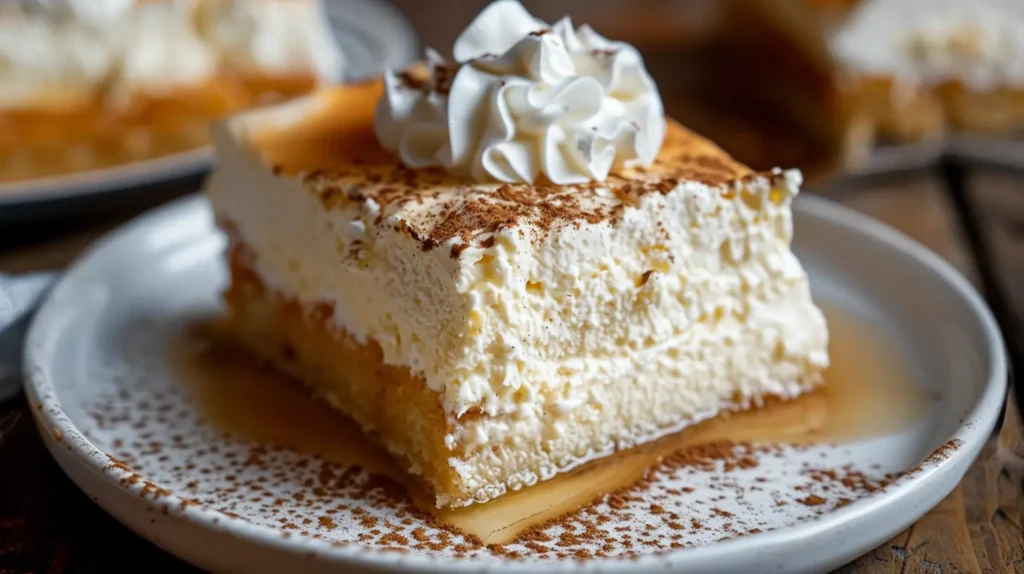
Overview:
Caramel Custard Cake, sometimes called flan cake or magic cake, is a luscious layered dessert that fuses a moist cake base with creamy flan on top—finished with a glossy caramel glaze. It stands out as one of the most eye-catching and beloved treats among Cuban desserts.
What Makes It Special:
As the cake bakes, the flan and sponge naturally divide into two layers—creating a striking effect that feels almost magical. The airy cake soaks up the caramel’s sweetness, while the flan remains smooth and creamy on top classic flan smoothness. It’s elegant, rich, and comforting all at once.
Cultural Significance:
This dessert is often reserved for celebrations and holidays in Cuban households. With its striking look and rich layers of flavor, it’s a standout dessert that never fails to impress guests and loved ones.
Tip:
Bake it in a water bath to ensure the custard sets evenly without cracking or overbaking.
Cuban Shortbread Cookies
Overview:
Cuban shortbread cookies, known locally as galleticas de mantequilla, are a delicate and buttery staple in the world of Cuban desserts. Made with a few pantry essentials—flour, butter, and sugar—these cookies deliver comfort in every bite.
What Makes It Special:
What sets them apart from other shortbreads is their distinctly Cuban desserts touch: hints of lemon or orange zest, vanilla extract, and sometimes almond or rum flavoring. Their melt-in-your-mouth texture and subtle sweetness make them a quiet star among traditional Cuban desserts.
Cultural Significance:
These cookies often appear at holiday gatherings, birthday parties, and everyday coffee breaks. They’re easy to make in large batches and perfect for sharing, reflecting the communal spirit behind many Cuban desserts.
Tip:
Let the dough chill before baking for the best shape and texture, and serve alongside a hot cafecito cubano for a classic pairing.
Sweet Potato Pudding with Cinnamon and Vanilla
Overview:
Boniatillo, or sweet potato pudding, is a cozy and often overlooked gem among traditional Cuban desserts. Made from mashed sweet potatoes (typically the white-fleshed variety used in Cuba), this dish is enriched with cinnamon, vanilla, sugar, and often a splash of citrus or rum.
What Makes It Special:
The natural sweetness of the sweet potatoes blends beautifully with warm spices and creamy textures. Sometimes condensed milk or coconut milk is added for richness, giving it a silky finish that makes it stand out among other traditional Cuban desserts.
Cultural Significance:
Often served during holidays and family dinners, boniatillo represents the resourceful, heartwarming side of Cuban desserts. It’s a dish that turns humble ingredients into something festive and satisfying.
Tip:
Top with toasted coconut, raisins, or a cinnamon stick to elevate both presentation and flavor.
Rum-Infused Cakes and Custards
Overview:
Rum plays a starring role in many Cuban desserts, bringing a warm, aromatic depth to cakes, flans, and creamy puddings. These rum-infused treats are especially popular during holidays and festive gatherings, adding a grown-up twist to traditional recipes.
What Makes It Special:
Whether brushed onto sponge cake, folded into custard, or baked directly into dough, Cuban rum enhances both texture and flavor. The alcohol mostly cooks off, leaving behind notes of molasses, vanilla, and spice—flavors that pair beautifully with caramel, chocolate, and tropical fruits.
Cultural Significance:
Cuba is known for its world-class rum, so it’s only natural that it finds its way into the island’s most luxurious Cuban desserts. These recipes are often passed down through families, used to mark special occasions with an extra splash of celebration.
Tip:
Use aged Cuban rum for a richer, more complex flavor—and reserve a drizzle for the top just before serving.
Traditional Cooking Methods & Tools
While the ingredients behind Cuban desserts are often simple—milk, eggs, sugar, and tropical fruits—the methods used to prepare them carry generations of knowledge and a deep respect for tradition. In many Cuban homes, recipes are not read—they are remembered, improvised, and passed down orally or scribbled in weathered notebooks.
Old-School Tools That Still Shine
Before modern appliances, Cuban cooks relied on manual techniques:
- Hand-cranked beaters and whisks were used to whip egg whites or cream for flans and cakes.
- Clay pots and tin molds helped evenly bake custards in wood-burning stoves or makeshift ovens.
- Aluminum pans, now common in Cuban-American kitchens, are still essential for pastelitos and puddings.
Cooking Techniques Rooted in Patience
Cuban desserts often require slow, careful preparation:
- Water baths (baño María) are used to gently bake flans and custards, preventing cracking and creating a creamy, even texture.
- Simmering and caramelizing are key to recipes like dulce de leche or boniatillo, where watching the sugar brown just right is a practiced art.
- Chilling and resting time is crucial, especially for tres leches cake and arroz con leche, which need time to absorb flavors and set properly.
Homestyle Touches and Improvisation
Due to resource limitations in Cuba, many families adapted their methods:
- Substituting fresh milk with powdered or canned versions.
- Reusing glass jars and tin cans as molds.
- Using local woods to flavor baked goods when ovens weren’t available.
These methods are a powerful reminder that Cuban desserts aren’t just recipes—they’re living traditions, shaped by resilience, creativity, and the joy of sharing something sweet with others.
Seasonal & Festive Desserts in Cuba
In Cuban culture, food is at the center of every celebration—and Cuban desserts play a starring role during holidays and special occasions. Whether it’s a religious feast, a birthday party, or a national festival, there’s always something sweet on the table.
Christmas & New Year’s:
- Buñuelos are a classic Christmas treat—deep-fried dough made from yuca or sweet potato, twisted into figure-eights and drenched in thick anise-flavored syrup.
- Turrón Cubano, a nougat-like candy with nuts and honey, is another holiday staple.
- Flan and tres leches cake frequently appear on Nochebuena (Christmas Eve) dinner tables, served after the traditional roast pork feast.
Birthdays & Family Gatherings:
- A rich Cuban chocolate cake or tres leches cake is almost always present.
- Pastelitos de guayaba are passed around with coffee, serving as both dessert and snack.
Carnaval & Local Festivals:
- During Carnaval, especially in cities like Santiago de Cuba, vendors offer coconut sweets, candied fruit, and plantain-based puddings from carts.
- Arroz con leche is served warm during late-night celebrations, often enhanced with cloves or citrus zest.
Religious Offerings & Santería Rituals:
Some Cuban desserts, like rice pudding or sweet yam, are used as food offerings to orishas (deities) in Afro-Cuban religious practices. These dishes are prepared with reverence and offered during rituals or personal devotions.
These seasonal and ceremonial sweets are more than delicious—they are symbols of heritage, spirituality, and communal joy. Each dessert carries with it the soul of the moment it’s made for, uniting generations around the table with flavor and memory.
Modern Cuban Dessert Twists
While traditional Cuban desserts remain beloved staples, a new wave of home cooks and pastry chefs—especially within the Cuban-American community—are reimagining classic recipes to reflect changing tastes, dietary needs, and creative trends.
Health-Conscious Versions:
- Vegan flan made with coconut milk, agar-agar, and plant-based caramel proves you don’t need dairy to enjoy creamy indulgence.
- Gluten-free pastelitos made with almond flour or cassava dough are now showing up in modern Cuban bakeries.
- Sugar alternatives, like monk fruit or raw cane syrup, are being used to reduce the glycemic load of traditional sweets like arroz con leche and tres leches.
Fusion Flavors:
- Chefs are blending Cuban flavors with global desserts—think guava cheesecake, mojito sorbet, or cafecito tiramisu.
- Rum-laced brownies and coconut flan cupcakes are making appearances at fusion restaurants and food trucks, especially in cities like Miami and Havana.
Elevated Presentation & Plating:
- Classic Cuban desserts are being served in refined, Instagram-worthy ways—mini flans in glass jars, pastelitos shaped into roses, or deconstructed tres leches cakes on tasting menus.
- Traditional tools are being swapped for sous-vide machines, blowtorches, and silicone molds in upscale kitchens.
This culinary innovation honors the soul of Cuban cooking while expanding its expression. It reflects the younger generation’s desire to stay rooted in heritage while embracing creativity, sustainability, and inclusivity—proving that the legacy of Cuban desserts isn’t stuck in the past; it’s evolving beautifully into the future.
Regional Variations of Cuban Desserts
Though the core of Cuban desserts is fairly consistent across the island, subtle regional differences have developed over time—shaped by geography, local ingredients, and cultural influences.
Eastern Cuba (Oriente): More Indigenous & Afro-Caribbean Influence
In the eastern provinces, desserts tend to feature stronger African and Taíno influences. Dishes are typically heartier, spicier, and more reliant on root vegetables and tropical fruits.
- Boniatillo (sweet potato pudding) is particularly popular here, often flavored with clove, nutmeg, and rum.
- Dulce de coco rallado, a sweet treat of shredded coconut simmered in syrup, is a local favorite best enjoyed chilled on warm afternoons.
- Fruit preserves made with guava, papaya, and pineapple are commonly eaten with cheese or cassava crackers.
Western Cuba (Havana, Pinar del Río): Colonial Elegance & Spanish Techniques
The western region, particularly Havana, is known for more refined versions of Cuban desserts, reflecting colonial Spanish culinary influence.
- Flan is often presented in individual molds, topped with burnt caramel and garnished with citrus peel.
- Arroz con leche here is lighter, sometimes made with orange blossom water or lemon zest for fragrance.
- Pastries like pastelitos de guayaba y queso are baked to golden perfection and widely sold in local cafés and panaderías.
Coastal Areas: More Fruit-Forward & Rum-Infused
In towns along the coast, the abundance of tropical produce influences dessert menus.
- In places such as Holguín and Cienfuegos, fruit salads made with mango, papaya, and a splash of rum syrup are especially well-loved.
- Coconut flan and coconut ice cream are common, especially in regions where coconut trees grow natively.
- These areas also favor fruit compotes and cold desserts that provide relief from the tropical heat.
Cuban Diaspora: Fusion and Accessibility
In cities like Miami and Tampa, Cuban-American communities have reimagined classic recipes by incorporating ingredients found locally.
- Guava cheesecake, tres leches cupcakes, and chocolate flan are common Cuban-American dessert hybrids.
- Vegan and gluten-free twists on traditional Cuban desserts are gaining traction in U.S.-based bakeries.
- You’ll also find desserts served with espresso or cafecito, a distinctly Miami-Cuban touch.
Step-by-Step Recipes & Tips
In this section, we’ll walk readers through simplified versions of three popular Cuban desserts that can be made at home with accessible ingredients. Each recipe includes ingredients, method, and helpful preparation tips.
Flan (Classic Cuban Caramel Custard
Ingredients:
- 1 cup sugar (for caramel)
- 1 can (14 oz) sweetened condensed milk
- 1 can (12 oz) evaporated milk
- 4 large eggs
- 1 tbsp vanilla extract
Instructions:
- Preheat oven to 350°F (175°C).
- In a pan, melt sugar over medium heat until golden and liquid. Quickly pour into a round baking dish and swirl to coat the bottom.
- Blend condensed milk, evaporated milk, eggs, and vanilla until smooth.
- Pour mixture over caramel in the baking dish.
- Set the baking dish in a larger pan and pour in enough water to reach halfway up the sides, creating a gentle water bath.
- Bake for 50–60 minutes or until set but jiggly in the center.
- Chill overnight. Invert before serving.
Tips:
- Use a metal mesh strainer when pouring the custard to ensure a silky texture.
- Let the flan rest at least 4–6 hours for the caramel to fully absorb.
Tres Leches Cake
Ingredients:
- 1 cup all-purpose flour
- 1½ tsp baking powder
- 5 eggs (separated)
- 1 cup sugar (divided)
- 1/3 cup milk
- 1 tsp vanilla extract
- 1 can sweetened condensed milk
- 1 can evaporated milk
- 1 cup heavy cream
- Whipped cream and cinnamon for topping
Instructions:
- Preheat oven to 350°F (175°C). Grease a 9×13-inch pan.
- Whisk the egg yolks together with ¾ cup of sugar until the mixture becomes light in color. Add milk and vanilla.
- In a separate bowl, whip the egg whites until they form soft peaks. Gradually add remaining sugar.
- Combine wet and dry ingredients gently. Fold in egg whites.
- Pour batter into pan and bake 25–30 minutes.
- Cool, then poke holes all over the cake.
- Mix three milks and slowly pour over cake. Chill overnight.
- Top with whipped cream and dust with cinnamon.
Tips:
- Poke holes all over the cake with a fork so the milk mixture can be fully absorbed.
- Serve cold for best texture.
Pastelitos de Guayaba (Guava Pastries)
Ingredients:
- 1 box puff pastry sheets (thawed)
- 1 cup guava paste (cut into small rectangles)
- Optional: ½ cup cream cheese
- 1 egg (for egg wash)
- Sugar for sprinkling
Instructions:
- Preheat oven to 375°F (190°C).
- Cut puff pastry sheets into equal squares.
- Add a piece of guava paste to the center of each pastry square, along with cream cheese if you like.
- Top with another square of pastry and seal edges with a fork.
- Brush with egg wash and sprinkle with sugar.
- Bake for 20–25 minutes or until golden brown.
Tips:
- Let guava paste chill slightly before slicing for cleaner cuts.
- Serve warm or room temp with Cuban coffee.
Dessert & Drink Pairings in Cuban Culture
In Cuban culture, dessert is rarely served alone. Whether it’s a midday snack or the close of a family meal, Cuban desserts are commonly paired with beverages that enhance their flavor and experience. These combinations reflect Cuba’s deep traditions, warm hospitality, and passion for robust coffee and island-inspired spirits.
Cuban Coffee (Cafecito) + Flan or Pastelitos
A strong cafecito cubano—brewed espresso sweetened with sugar as it boils—is the island’s most iconic drink. Its bold flavor and sweetness complement:
- Flan, by cutting through the richness of the custard.
- Pastelitos, balancing the buttery pastry and guava filling.
In social settings, sharing dessert with a round of espresso is a beloved Cuban ritual.
Batido de Trigo or Batido de Mamey + Sweet Plantain Desserts
These creamy milkshakes made from puffed wheat (trigo) or mamey fruit are filling and naturally sweet, making them ideal partners for:
- Sweet plantain puddings
- Boniatillo (sweet potato pudding)
They add tropical flavor while keeping the overall dessert experience light and refreshing.
Aged Cuban Rum or Rum Liqueur + Coconut Flan or Chocolate Cake
For more grown-up dessert tables or holiday feasts, aged rum pairs beautifully with:
- Coconut flan, complementing its nutty notes.
- Cuban chocolate cake, enhancing the cocoa with warm, spiced depth.
Many hosts also drizzle a little rum directly onto desserts for added flair.
Herbal Teas (Té de Manzanilla or Té de Yerbabuena) + Rice Pudding
After a heavy meal, Cubans often enjoy arroz con leche with a light herbal tea to aid digestion and relax. Chamomile or mint tea are common choices.
These thoughtful pairings remind us that Cuban desserts are not just a sweet ending—they’re part of a larger social and sensory tradition, where flavor, mood, and connection are always on the menu.
Conclusion: Why Cuban Desserts Are a Taste of Heritage
Cuban desserts go beyond satisfying a sweet tooth—they represent the island’s history, cultural pride, and enduring spirit. From the moment flan slides onto a plate to the last flaky bite of a guava pastelito, these dishes tell the story of Cuba’s past and present. They capture the heart of the island’s food culture in every spoonful, blending flavors born from Spanish, African, and Caribbean roots.
Across generations, Cuban desserts have remained a cornerstone of family life. These recipes are shared between abuelas and grandchildren, scribbled in notebooks, whispered from memory, and lovingly recreated in kitchens from Havana to Miami. Whether it’s tres leches cake at a birthday or arroz con leche on a quiet evening, dessert in Cuba is never just about indulgence—it’s about connection.
The simplicity of ingredients—milk, eggs, sugar, tropical fruits—is balanced by the depth of meaning behind each dish. In many Cuban homes, desserts are often the centerpiece of celebration. And even in hard times, a humble flan or homemade dulce de leche brings joy. That’s the magic of Cuban desserts—they transform scarcity into celebration, and everyday moments into memories.
Today, modern versions of Cuban desserts are emerging around the world, especially among the Cuban diaspora. Vegan flans, guava cheesecakes, and gluten-free pastelitos are just a few ways that these classics are being reimagined—without ever losing their soul. Still, at their core, these desserts remain rooted in heritage.
If you enjoy trying creative twists on traditional recipes, you might also like this Cottage Cheese Banana Bread Recipe for a comforting treat with a modern spin. and For more inspiration on easy treats you can make with minimal ingredients, check out these 3-Ingredient Slow Cooker Recipes.
So why do Cuban desserts matter?
Because they preserve the past, flavor the present, and inspire the future. They are a taste of Cuba’s heart—sweet, enduring, and unforgettable.
for more recipes follow me in Facebook, Pinterest and medium.
FAQ’s : People Also Ask About Cuban Desserts.
What is the most popular dessert in Cuba?
The most popular dessert in Cuba is flan—a silky, caramel-topped custard that’s both simple and deeply satisfying. Made with eggs, sweetened condensed milk, evaporated milk, and vanilla, flan is served chilled and is a fixture at Cuban family gatherings, holidays, and Sunday dinners. Its smooth texture and sweet caramel glaze make it a go-to favorite across generations.
What is a traditional Cuban pastry?
One of the most iconic traditional Cuban pastries is the pastelito de guayaba. These flaky, golden pastries are filled with sweet guava paste, and sometimes cream cheese, offering a perfect balance of tart fruitiness and buttery crunch. Widely sold in Cuban bakeries and often enjoyed with café cubano, pastelitos are a staple of Cuban breakfast and snack culture.
What is in Cuban flan?
Cuban flan is made from a few simple ingredients:
Sweetened condensed milk
Evaporated milk
Eggs
Vanilla extract
Granulated sugar (used to make the caramel)
The mixture is poured over a layer of homemade caramel and baked in a water bath to ensure a silky, custard-like texture. Once chilled and inverted, the flan reveals a glossy caramel top and a rich, creamy base.
What is a señorita Cuban dessert?
The señorita is a lesser-known but cherished Cuban dessert. It consists of delicate, layered puff pastry filled with vanilla custard or pastry cream and sometimes topped with powdered sugar or a sugar glaze. Think of it as Cuba’s answer to the Napoleon, but typically lighter and less sweet. Señoritas are usually served chilled and are popular in traditional Cuban bakeries.
What is the difference between Mexican and Cuban flan?
While both Mexican and Cuban flan share the same custard foundation, there are subtle differences:
Cuban flan tends to be richer and denser, often using both sweetened condensed and evaporated milk.
Mexican flan is typically lighter and may include cream cheese or orange zest, depending on the recipe.
Cuban flan is usually baked until just set and served with a generous caramel sauce, emphasizing deep vanilla flavors.
In both cultures, flan is a treasured dessert, but Cuban flan is often considered the more indulgent of the two.
